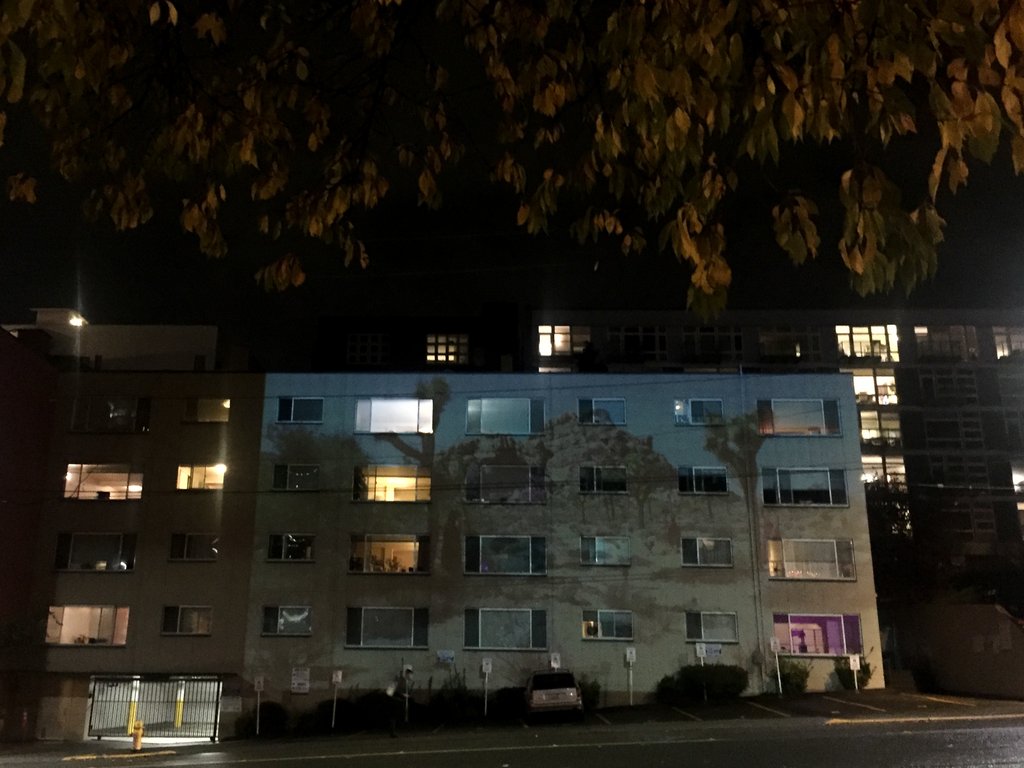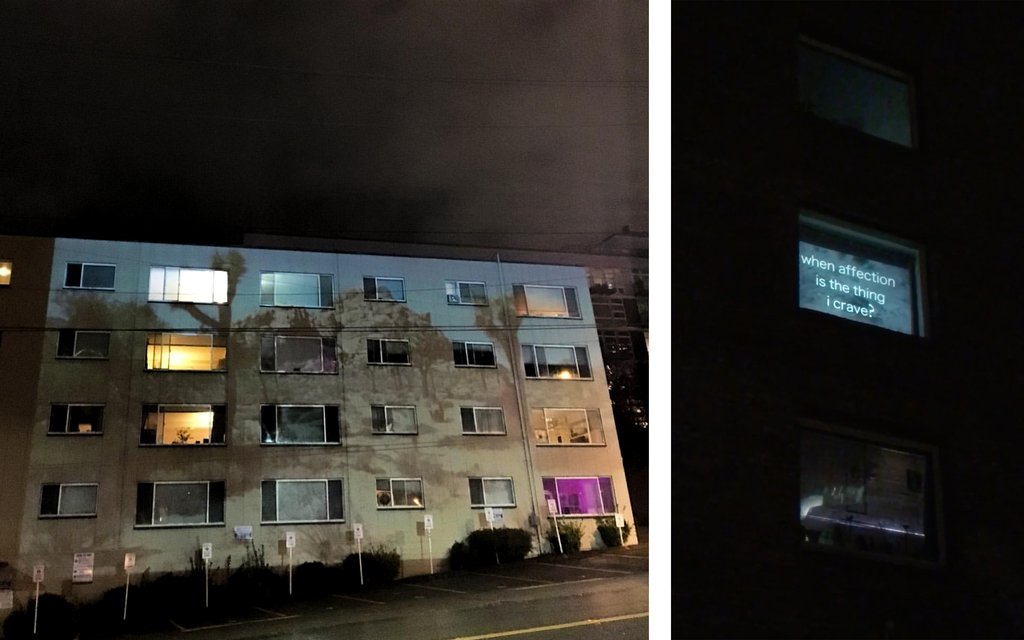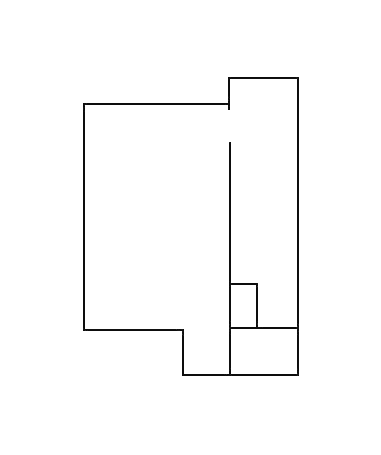Frontiers: Embodied Space & Bodily Intelligibility

Essay by Anisa Jackson | Photographic Stills from Mel Carter’s When the Caustic Cools
I told Mel that I would write her a love letter. This is certainly not a love letter in any traditional sense, but it is impossible for me to engage with her work without acknowledging our closeness. Through our friendship and shared inquiry, I have often cherished how we care for each other. In the weeks following the election, I noticed how our friendship (or more broadly, how love and care) cannot necessarily eliminate mourning or grief, but there is certainly something about care that makes these events feel more bearable.
Post-election, I question if I have fully mourned, or what it would look like to put limitations on such mourning. I think within that process is accepting the loss as one that changes you. We know this loss is really not a loss at all, but an affirmation of the extent to which white supremacy contorts itself as commonsensical at the expense of those who exceed the normative categories of race, gender, class, etc. and ultimately individualizes our pain and grief. Throughout the violent processes we endure as womxn & femmes of colour, validating, caring about, and caring for each other is a radical and political act. It is an insistence that honors the way that we are relational beings. It is a form of care that exists in resistance to neoliberal tendencies which seek to depoliticize and decontextualize our experiences and emotions. And that is what makes the spaces that womxn & femmes of colour carve out for ourselves in this city even more meaningful.
I’m reminded of Johanna Hedva’s wisdom,
I used to think that the most anti-capitalist gestures left had to do with love, particularly love poetry: to write a love poem and give it to the one you desired, seemed to me a radical resistance. But now I see I was wrong.
The most anti-capitalist protest is to care for another and to care for yourself. To take on the historically feminized and therefore invisible practice of nursing, nurturing, caring. To take seriously each other’s vulnerability and fragility and precarity, and to support it, honor it, empower it. To protect each other, to enact and practice community. A radical kinship, an interdependent sociality, a politics of care.
Mel started the piece on a trip to Joshua Tree while witnessing repeated negligence and violence to the natural environment by the desert’s visitors. She described how visitors would break branches off the Joshua Trees to ornament their photoshoots, or to construct their imaginary of a “pristine landscape” (paradoxically, free of human traces). Furthermore, as a protected site this violence was even more incontestable. Joshua Tree, among other national parks are surrounded by the rhetoric of safe spaces, yet these environments are anything but “untouched,” “pristine,” or other descriptors of natural environments through a romanticized settler-colonialism. Rather, these sites bear quite violent histories of displacing indigenous peoples in order to build large-scale playgrounds for the white elite. We are continuing to see the various ways that a white supremacist capitalist patriarchy perpetuates the genocidal colonization of indigenous peoples and environments, most discernibly through the construction of the Dakota Access and Kinder-Morgan pipelines. Moreover, the management and valuation of national parks rely on similar attitudes of environmental domination and distribution, and are in fact, yet another institution of colonization. We should question who has access to conservation areas and why, which bodies are read as environmentalists, and where caring about the environment includes and excludes caring for all human life.
The first of Mel’s two projections came out of the second-floor window of El Capitan. The series of text Mel wrote atop of blurred movement is affective, reactionary, confrontational. In gray text Mel poses:
It could be hard to hear anything above the racket that has become your guilt and loneliness.

I am not sure if it is simply the delineations of bodies that renders the pain of others illegible. I suspect this unintelligibility is furthered by the myth that pain can simply exist on one’s own, that pain can exist autonomously and has nothing to do with mutuality. Snapping off branches of yucca, watching them splinter, “you yelp and pull yourself away quickly, examining only your own injuries while simultaneously sucking your thumb” as Mel describes in her brilliant essay accompanying the videos. Insofar as egoism obstructs us of understanding the pain of others (even as the perpetrators of such pain), it refuses to consider a new ontology of the body in relation to the bodies of others.

These affective positions are communicated as the camera spins, blurring the background, first quite rapidly, then slowing down. While the text is certainly reflexive, its ability to draw you in is furthered by this dizzying presentation- my view is constricted and I’m forced to look inwards. The text transgresses the divide between the self and its situation, behaving as both the voice of an interrogative narrator and setting, by virtue of pulling you in so you can sit with it intimately. The conveyance of such ambiguities and tensions both symbolically and literally bears some resemblance (and admittedly, somewhat facetiously) to the widely circulated Mr. Krabs meme. The image of the commodity fetishist bewildered and isolated by a blurred vignette situates and confronts the viewer with its self. My association with Mr. Krabs and this particular presentation of the text, while perhaps guided by a phenomenological approach to my nearsightedness, stems also from both the subjective crisis and violence that results from notions of the clearly demarcated, autonomous neoliberal subject.
The transition to Mel’s second video, projected onto the face of the apartment complex behind El Capitan, is intuitive. Its transgressions live in-between the boundaries of violence and care. Here, Mel is seen throughout Joshua Tree embracing, caressing, and caring for the desert dwellers. Even as she lays on boulders, it is done with a softness and attentiveness that questions any form of dominance. The projected images of Mel circling the the yuccas leads her head through the windows of the building’s inhabitants, a radical softness demanding consideration. The task of caring is gendered, racialized, and associated with a subjugated people. While this socialization (and thus its devaluation) is oppressive, the task of caring is nonetheless essential to the fabric of our social and ecological well-being. Well-being, not as a capitalist construct referring to value-production, but rather a configuration in resistance, one which necessitates the reciprocity of care and ontologizes the subject through the social for a shared embodied existence.

A feminist ethic of care refers to approaches based in the centrality of caring for the self and others. Opposing presumptions of ahistorical, apolitical, and individualized subjects, a feminist ethic of care relies on mutuality and interdependency, contextualizes the caring and the cared for as essential within the basic composition of wellbeing, and offers a relational approach to ethical questions and issues. This conception of care contextualizes moral relations as interdependent, and within that interdependence, there is an economic, social, political, and personal responsibility to care for others, by virtue of being beyond the immediate self. An environmental ethics may push us into considering caring for the needs of both human and nonhuman life, as our ecology certainly relies on a similar form of interdependency.
Combined, Mel’s two projections call into question the boundaries of violence and care. As Judith Butler notes, “violence is surely a touch of the worst order, a way [vulnerability] is exposed in its most terrifying way, a way in which we are given over, without control, to the will of another, a way in which life itself can be expunged by the willful action of another.” When we consider subjectivity as radically open, challenge individualized formulations of self and recognizes the ways in which we are constituted by one another, for one another, that which delineates our relationality, certainly reveals sites risked to violence. It can also be argued that care necessitates such vulnerability. Accompanying a relational social ontology are the political implications of acknowledging responsibility, accountability, and concern to live for another. Solidarity is built on risk. Community is built on risk. Though the boundaries of the body expose us to violence, they also expose us to care.


Recommended Readings:
Ahmed, Sarah. Cultural Politics of Emotion. New York: Routledge, 2004.
Butler, Judith. Precarious Life: The Powers of Mourning and Violence. London: Verso, 2004.
Gordon, Elyse. “Radical Vulnerability: Towards Stronger Alliances.” Relational Poverty Network, May 12, 2014.
Hedva, Johanna. “Sick Woman Theory.” Mask, 2015.
Lawson, Victoria. “Geographies of Care and Responsibility.” Annals of the Association of American Geography, March 13, 2007.
Luna, Caleb. “Romantic Love is Killing Us: Who Takes Care of Us When We Are Single?” The Body is Not an Apology, November 30, 2016.
Lopez, Patricia J., and Kathryn Gillespie. “A Love Story: For ‘Buddy System’ Research in the Academy.” Gender, Place & Culture, November 09, 2016.
Back to Articles
